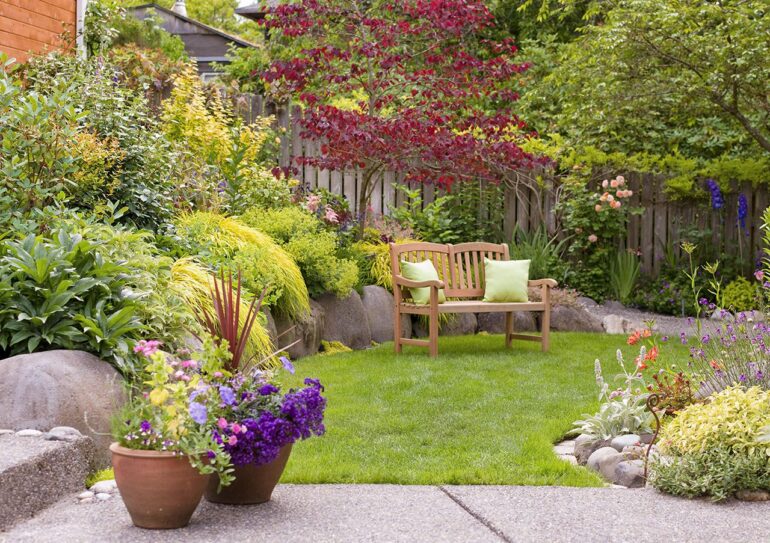A backyard with uneven ground may look picturesque, but when it comes to usability, steep slopes present more problems than possibilities. Lawns become harder to maintain, patios become harder to place, and erosion becomes more than just an aesthetic concern.
Fortunately, there’s a design solution that doesn’t involve bulldozing the entire landscape: retaining walls.
With the right strategy, retaining walls can turn challenging terrain into level, practical, and visually appealing outdoor spaces. Whether you want to garden, entertain, or simply enjoy your yard without slipping downhill, this structural feature can change how you interact with your land.
Let’s explore how strategic use of retaining walls helps homeowners reclaim their space—without fighting against the natural slope.
The Reality of Sloped Yards
Beauty Meets Frustration
It’s not unusual for a sloped backyard to be the product of elevation changes across a neighborhood or leftover grading from a home build. While gentle contours can enhance visual interest, steeper slopes often interfere with basic functionality.
Homeowners may find themselves dealing with:
- Runoff and erosion during rainstorms
- Difficulty placing flat surfaces like decks, sheds, or pools
- Poor drainage leading to puddling or flooding
- Trouble maintaining landscaping or mowing
These limitations make outdoor projects feel impossible—or at the very least, impractical. Yet the slope doesn’t need to be removed. It needs to be reimagined.
What Retaining Walls Actually Do
More Than Just Holding Back Soil
At their most basic, retaining walls stabilize a slope by holding soil in place. But when used strategically, they do much more than that.
They can:
- Create flat areas for patios, gardens, or lawn use
- Support driveways or paths on uneven ground
- Separate functional zones in multi-level landscapes
- Control water flow and prevent damage to foundations
- Act as built-in seating or garden borders
These walls are engineered to stand up to the pressure of earth and water over time—while fitting seamlessly into your overall outdoor design. That blend of structure and subtlety is what makes them such a valuable addition to sloped yards.
Reclaiming Flat Space, One Tier at a Time
Terracing as a Design Tool
One of the most effective ways to tame a slope is to break it into smaller, more manageable levels. This method, called terracing, involves building multiple short retaining walls with level ground in between.
Each terrace can then serve a different purpose:
- The top tier might house a vegetable garden
- The middle level could be used for a stone patio or fire pit
- The bottom area could serve as a kids’ play zone or lawn
Rather than fighting the grade, terracing embraces it—transforming what once felt like wasted space into a functional and elegant multi-level landscape.
Professionals like Precise Outdoors & Design often incorporate terracing as a way to maximize both form and function in yards that would otherwise go unused.
Retaining Walls as Flow Control
Solving Drainage Without Ditchwork
One of the biggest headaches of a sloped yard is uncontrolled water movement. Rainwater rushes downhill, taking topsoil with it and pooling in lower areas—often close to your home’s foundation.
Properly installed retaining walls can redirect and slow water flow through:
- Grading and sloping techniques built into each level
- Gravel backfill that improves drainage behind the wall
- Strategic placement of weep holes or French drains
- Thoughtful routing of runoff toward storm drains or rain gardens
When designed correctly, the wall doesn’t just hold the land—it manages it. That’s especially important if you’re adding features like garden beds, outdoor kitchens, or retaining structures near your house.
Material Choices That Blend With the Environment
Functional, but Not Industrial
One concern homeowners often express is that retaining walls will make their yard look “boxed in.” But modern materials offer plenty of options that blend with nature or complement your home’s architecture.
Popular choices include:
- Dry stack stone for an organic, rustic feel
- Timber walls that age into the landscape
- Textured concrete blocks for clean, modern lines
- Mixed material designs that soften edges and add contrast
By coordinating materials with existing patios, siding, or plant selections, the wall becomes part of the scenery rather than a barrier. Curved shapes, stepped heights, and planted edges further integrate the wall into the overall design.
Planning Considerations for a Smooth Build
The Right Wall Starts With the Right Prep
Before installing retaining walls, there are a few key planning steps to consider:
- Soil testing: Determines how much reinforcement or drainage is required
- Local building codes: Some areas require permits or inspections for walls above a certain height
- Design drawings: Help visualize levels and alignments before construction
- Material selection: Impacts both durability and style
- Access: Construction equipment and materials must reach the build site without disturbing other parts of the yard
Cutting corners at this stage can lead to long-term issues like cracking, leaning, or drainage failure. That’s why even small walls benefit from thoughtful, professional input.
Partnering with a knowledgeable team like Precise Outdoors & Design ensures the final build is as stable and long-lasting as it is visually integrated.
Long-Term Benefits of Slope Control
A Yard That Works With You, Not Against You
Once installed, retaining walls require little maintenance and deliver ongoing benefits:
- Less erosion and water damage
- More usable outdoor space
- Higher property value and improved curb appeal
- Greater opportunity for future landscape features
By solving elevation challenges now, you make room for future projects—like adding lighting, installing a pergola, or planting shade trees without fear of soil shifting.
A yard with clearly defined levels also makes seasonal care easier, from mowing to mulching, giving you more control over your outdoor experience.
Final Thoughts: Don’t Let the Slope Steal the Space
Steep or uneven backyards are a common obstacle—but not a permanent one. With strategic planning and well-built retaining walls, homeowners can reclaim their land, redefine how it’s used, and enjoy more flexible outdoor living.
You don’t have to level your entire yard to make it functional. You just need to work with the landscape instead of against it.
From terraced gardens to water-friendly design, retaining walls offer practical answers to elevation issues—while quietly enhancing the space’s style. And with guidance from experienced professionals, you can make the most of every square foot, no matter the slope.






